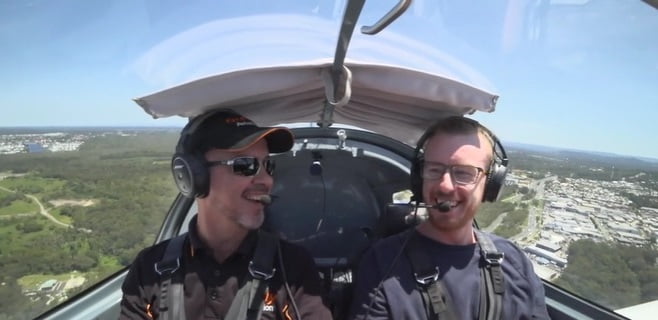BFRs – not a pass or fail exercise
While Examiners cannot fail you as a BFR is not a test (there are no pass or fail criteria), the examiner providing the BFR may decline to endorse your logbook. This may be on the basis that a flight review is not completed until appropriate competencies (minimum standards) are met and demonstrated.
If you would like to access all our helpful online videos and theory books, sign up here: www.gofly.online/register
Please find below some questions for your oral quiz/chat on the day. These questions are provided to ensure you understand the regulatory landscape in which you operate under as well as the significant changes in legislation that have recently occurred.
1. Can you define what Part 91 is?
2. How do CAO 95.55/ 95.32/ 95.10 fit into the legislation landscape? What CAO do you
operate under?
3. Where would you find the exemptions to Part 91 that apply to RAAus?
4. When are you required to obtain a weather forecast?
a. For the above question what minimum documents must you obtain?
5. What are the alternate aerodrome requirements prescribed in CASR Part 91?
6. What are the specified VFR Cruising Requirements?
a. What are the exceptions to the above question?
7. What are the VMC requirements for operations in Class G?
a. Below 3000ft AMSL or 1000 AGL
b. Below 10000ft AMSL
8. What is now required to carry a firearm onboard an aircraft?
9. Describe the steps required to carry an animal onboard your aircraft
10. What are the minimum mandatory radio calls required in the vicinity of a non-
controlled aerodrome?
11. When is a flight notification required to be submitted?
12. What matters must a pilot check before take-off?
13. Can you accept a phone call whilst refuelling your aircraft?
14. What requirement does a pilot have to comply with the POH or Flight Manual?
15. When are you required to check your fuel for contamination?
Question References (where to find the answers)
1. Civil Aviation Safety Regulations – General Operating and Flight Rules
2. Refer to Legislation Structure for RAAus Members
3. CAO 95.55/95.32/95.10 (as applicable to the CAO the member operates under)
4. CASR Part 91.230 & CASR Part 91 MOS Chapter 7.02
5. CASR Part 91.235 & CASR Part 91 MOS Chapter 7.02
6. CASR Part 91.275 & CASR Part 91 MOS Division 2.5
7. CASR Part 91.280 & CASR Part 91 MOS Chapter 2.07
8. CASR Part 91.160
9. CASR Part 91.620
10. CASR Part 91.630 & CASR Part 91 MOS Chapter 21
11. CASR Part 91.240 & CASR Part 91 MOS Chapter 9 (9.02)
12. CASR Part 91.245 & CASR Part 91 MOS Chapter 10 (10.02/10.05/10.06)
13. CASR Part 91.170 – 91.175 & CASR Part 91 91.485
14. CASR Part 91.095
15. CASR Part 91.465

